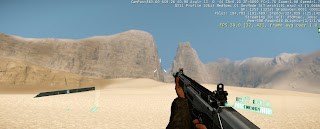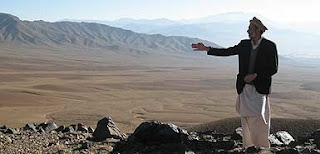Below is a very undeveloped S/up model of my bridge. The long curved lines represent the organic form extending from the land and bridging the valley. The large white walls at each end represent the valley mountains for the purpose of this demonstration. The cubes represent the spaces which will make up the university rooms. I am still assigning sizes to each of these spaces based on their requirements for functional size. I also intend for the long curving lines to take on a very random nature and also to be circular tubes, possible used as stairways to access various parts of the university. I am struggling to make circular curved shapes in S/up so will ask my tutor how this is possible.
Monday, 27 May 2013
EXP 3: DRAFT FOLLY
I have created my draft folly in S/up from one of my 'F shaped' prism combinations. Below is an image of the model alone and another using different colours to indicate the F shapes.
After tidying up an area of my valley floor using ground cover vegetation and a clearing of trees, I created a space directly in between the two main valley mountains where I shall place my folly. Below are two images, the first showing the folly from afar on the valley floor, showing its relationship with surrounding vegetation, and the second showing one of the main mountains in the background.
Monday, 20 May 2013
EXP 3: MASHUP
An architect takes on what others
have left subsequent generations. The relation between the parts to the whole were
characteristic to him, every part has to have its own identity but at the same
time be inexorably chained to the whole. That
abstract saying form and function are one is the center line of architecture,
organic. It places us in line with nature and enables us sensibly to go to
work. We are shifting in what we live now; we don't really live in
it.A useful
point of departure is to disentangle it, if only momentarily, from the word
organic. This analogy between nature
and architecture already occurred in works of the artist Horatio Greenough in
the middle of the 19th century. Perhaps
in realizing this, in later writings Wright occasionally punctuated the
relationship between organic architecture and nature, emphasizing that they are
inseparable. We don't
really understand what it is to live in an organic building with organic
character. A building should appear to grow
easily from its site and be shaped to harmonize with its surroundings. Any building which is built should love the ground on
which it stands. Wright
sees every building as something special, related to the location where it
stands and as part of the landscape, nature. Wright always thought that we should live with some
connection to nature – he said that it was more humane, that it was, in
fact, in our nature.
EXP 3: CRYENGINE LANDSCAPE
Here is the landscape which I have modelled from the Jamison Valley in the Blue Mountains of Australia. This particular image looks quite bad as the vegetation in the background is not appearing, and yet the shadows of the vegetation are. This is quite frustrating and I will try to figure out a solution for my next fraps images.
At the moment the valley is still quite undeveloped and only really consists of the parts of the valley shown in the image I posted last week - it's also viewing the valley from roughly the same point as in the photograph. I hope to gather some more aerial and circulating views of the valley in the coming weeks so that I can properly develop the surrounding landscape. I intend to develop my bridge crossing the valley from the two largest points of the mountainous valley edge (shown in the foreground of this screencapture). Work on the colours is also still needed but overall I am happy with my progress on this landscape.
Monday, 13 May 2013
EXP 3: CHOSEN VALLEY
Below is an image of the Jamison Valley in the Blue Mountains, Australia. I chose this valley to use as my Experiment 3 environment as it is an area of Australia which I would like to visit
Sunday, 5 May 2013
EXP2: FINAL SUBMISSION
INITIAL AXONOMETRICS/CONCEPTS
Sou Fujimoto: Spatial fluidity is established through plan and in a vertical hierarchy.
Adolf Loos: Raumplan - multi-level articulation of rooms through cubes.
COMBINED AXONOMETRIC / ELECTROLIQUID AGGREGATION
Rationality and fluidity in architecture is achieved through an articulation of space through multiple levels and a vertical hierarchy - ultimately establishing a layering effect.
5 REAL-TIME IMAGES
SKETCHUP MODEL LINK: http://sketchup.google.com/3dwarehouse/details?mid=d337d43f47f2a78631345513eb442b18
CRYENGINE FILES LINK: http://www.gamefront.com/files/23274330/arch1101_exp2_v2%283%29.rar
I have included 3 game files within this upload. One is the finished model in the day (no lights) and one is the finished model in the night (with lights). However during my final export of my finished sketchup model to cryengine, the model seemed to lose its collisions, meaning that I fall through the surfaces when going into game mode. I tried for several hours to fix this using various possible solutions however none worked. Instead, I have also included the most recent version of my cryengine file in which the sketchup model's collisions worked. In this file the terrain is the same as the finished file but the sketchup import has a few slight uncompleted parts. These parts are very small, however, and thus is still effective in demonstrating the way in which a user can move around the space. I hope this is not a inconvenience, and if this is unacceptable please let me know and I will invest more time in trying to counter this issue.
I have included 3 game files within this upload. One is the finished model in the day (no lights) and one is the finished model in the night (with lights). However during my final export of my finished sketchup model to cryengine, the model seemed to lose its collisions, meaning that I fall through the surfaces when going into game mode. I tried for several hours to fix this using various possible solutions however none worked. Instead, I have also included the most recent version of my cryengine file in which the sketchup model's collisions worked. In this file the terrain is the same as the finished file but the sketchup import has a few slight uncompleted parts. These parts are very small, however, and thus is still effective in demonstrating the way in which a user can move around the space. I hope this is not a inconvenience, and if this is unacceptable please let me know and I will invest more time in trying to counter this issue.
Saturday, 4 May 2013
EXP 2: COMBINED AXONOMETRIC IN S/UP AND INCOMPLETE TERRAIN
After this week's studio session, I decided to use a different axonometric combination (I have since updated my electroliquid aggregation to suit the axonometric pair which I am now using). Under the advisement of my tutor I began experimenting with CryEngine textures and terrains to create a unique environment which differed from the typical forest/river/waterfall approach that most students were taking (including myself). I eventually settled on a middle-eastern inspired landscape - one of Ro's suggestions. We also discussed the way in which the top of my monument was the widest part, and could be used as a structural support wedged between a very vertical terrain with the rest of the monuments suspended beneath this. Using this idea, I created an Afghanistan-inspired 'valley', where a relatively low and flat desert surface was surrounded by mountains. Here is a photograph which partially inspired the design:
I am happy with my terrain modelling in the CryEngine file in regards to the mountains and the overall appearance, however due to limitations in my knowledge of entities such as rocks, grass, and trees, it was difficult to add such aspects to the design. I feel that most of the entities available in the SDK are intended (or at least work much much better) in a green and lush forest landscape, rather than a pale desert landscape. As such, certain smaller aspects of the landscape detail are not yet fully complete, however due to the middle-eastern terrain being naturally limited in foliage this should not be too much of an issue. Here is a screenshot from the lower and flatter part of the valley, viewing the mountains where the monument will be 'wedged'.


Following this idea of the flat top of the monument, I decided to use this space as the meeting place, with each monument hanging from below one side of the meeting space. This allowed the meeting place to be the access point to each monument, thus providing the space with more purpose and making it integral as both a structural and functional piece of the monuments. Here is a screenshot of my incomplete S/up model. I still have to add stairs and a few small details such as handrails to allow the space to be more usable, but I am happy with the progress thus far.
Subscribe to:
Comments (Atom)














